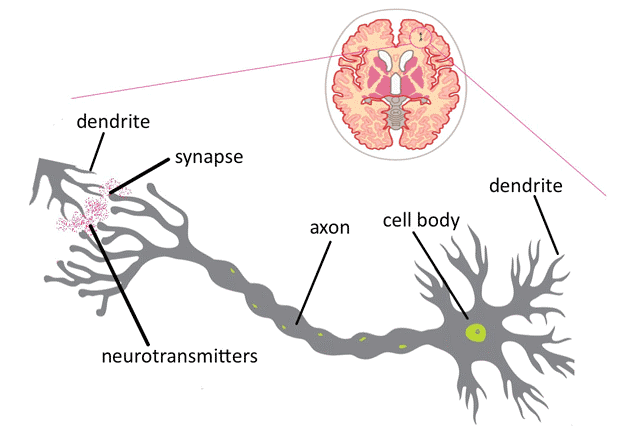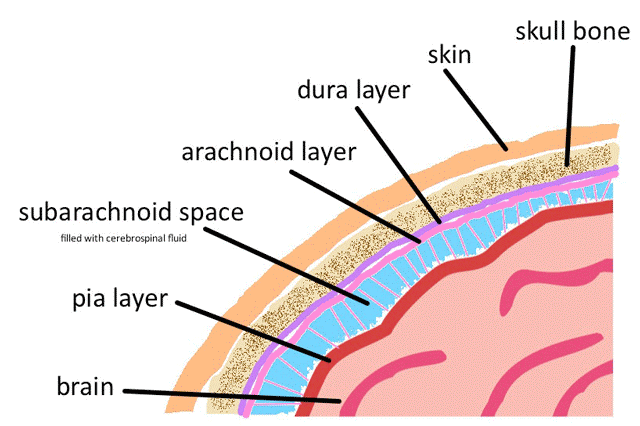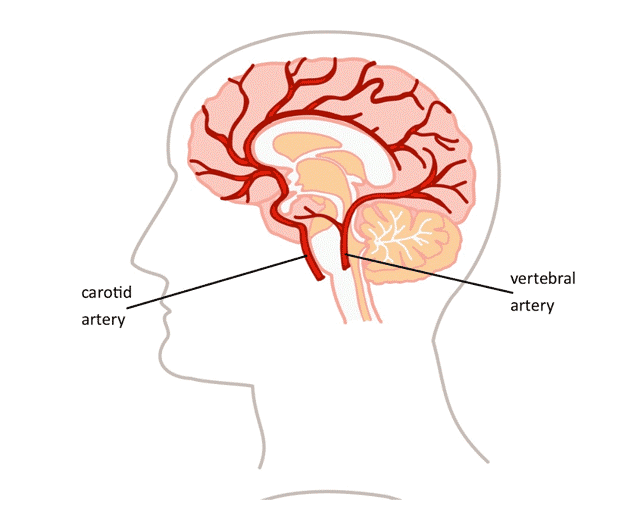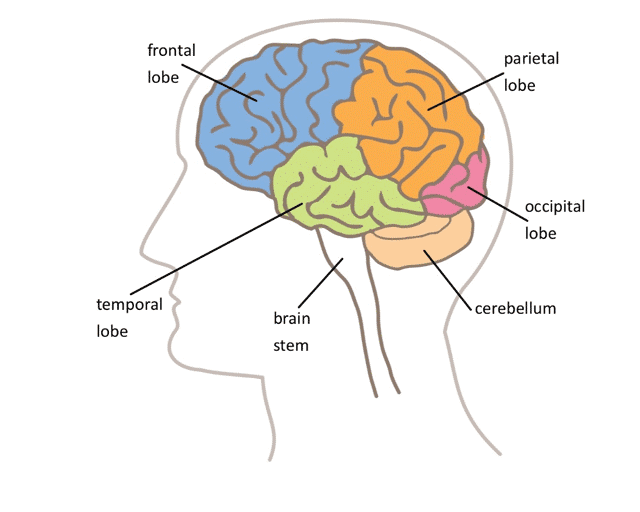The brain is the body’s control centre. It’s made up of billions of nerve cells called neurons.
Neurons
Neurons are arranged in patterns that work together to control how you think, feel, act, see, taste, touch, and move. They also work together to control your breathing, heart rate, and blood pressure.
Neurons release chemicals (called neurotransmitters) that trigger an action in other neurons. Some well-known neurotransmitters are epinephrine, norepinephrine, and dopamine.
Neurotransmitters are released at the synapse, the space where messages are sent between neurons. Messages arrive at the dendrites and are sent down through the axon (tail of the neuron) to other cells. How fast the message is sent from one neuron to another depends on the path it takes. It also depends on how the neurons “talk” to each other through the chemicals they release at the synapse (Figure 1).
 Figure 1: A nerve cell
Figure 1: A nerve cell
Image credit: Calgary Brain Injury Program
Nerves
Information goes through many nerves that connect to different areas of the brain. One main route from the brain to the rest of your body is through the spinal cord.
Nerves send messages to your brain about hot and cold temperatures, pressure, pain, and where your arms and legs are positioned.
Other nerves carry information to your brain from your eyes, ears, tongue, and muscles on your face.
The brain sends messages to your muscles through nerves so you can move, walk, talk, and swallow.
The brain
The brain is covered by 3 layers of membranes. These are the dura, arachnoid, and pia mater (Figure 2). They make up the meninges of the brain.
 Figure 2: Meninges covering the brain
Figure 2: Meninges covering the brain
Image credit: Calgary Brain Injury Program
The brain and spinal cord are surrounded by a clear fluid, called cerebrospinal fluid (CSF). CSF is within the subarachnoid space (between the arachnoid and pia layers) and also moves through the ventricles of your brain (Figure 3).
 Figure 3: CSF within the brain
Figure 3: CSF within the brain
Image credit: Calgary Brain Injury Program
Four major arteries supply your brain with blood that carries oxygen and other nutrients (Figure 4):
- 2 vertebral arteries follow the spinal cord up to the brain
- 2 carotid arteries carry blood to the brain on each side of the throat
 Figure 4: Arteries to the brain
Figure 4: Arteries to the brain
Image credit: Calgary Brain Injury Program
Areas of the Brain
The brain is divided into 2 halves called cerebral hemispheres. Each half looks almost the same. They have different jobs but they work closely together to control the body’s activities.
|
Left side of the brain |
Right side of the brain |
| controls the
right side of the body |
controls the
left side of the brain |
| involved with listening, reading, speaking, and writing |
judges the position of things in space, including your body position |
| involved with memory of words we say and write |
understands and remembers things we do and see |
| analyzes information in detail |
puts bits of information together to understand what’s happening |
| gets sensation signals from the
right side of the body and space |
gets sensation signals from the
left side of the body and space |
Most of the brain is divided into 4 areas called lobes (Figure 5). These lobes are on each half of your brain. The other 2 main parts of the brain are the cerebellum and the brain stem. Each area of the brain has a different job.
 Figure 5: Areas of the brain
Figure 5: Areas of the brain
Image credit: Calgary Brain Injury Program
Occipital lobes
Damage to the left occipital lobe may cause problems seeing things on the right side.
Damage to the right occipital lobe may cause problems seeing things on the left side.
Parietal lobes
Damage to the left parietal lobe may lead to problems in reading and math. It can also cause a loss of feeling or sensation on the right side of the body. This means you may have changes to how you sense touch or feel pain, see, or feel temperature changes on the right side of your body.
Damage to the right parietal lobe may lead to problems with understanding what you’re looking at, such as pictures, diagrams, or reading maps. Damage to the right lobe may also cause changes in feeling or sensation on the left side of your body.
Frontal lobes
Damage to either frontal lobe may lead to problems with control of your feelings, how you interact with others, making good decisions (judgment), planning, and organization.
Damage to the left frontal lobe may cause problems with speech and moving the right arm or leg.
Damage to the right frontal lobe may cause problems moving the left arm or leg.
Temporal lobes
Damage to the left temporal lobe may cause problems in understanding and remembering language.
Damage to the right temporal lobe may cause problems in understanding and remembering pictures, drawings, body language, and other types of information we see.
Brain stem
The brain stem controls your breathing and heart rate. It also gives commands to the muscles of the face, eyes, mouth, and throat. Damage to the brain stem can cause many muscle-related and sensation problems.
Cerebellum
Damage to the cerebellum may cause problems with coordination (moving your body smoothly), balance, or muscle tone in different parts of the body.
Print out the
Brain Injury Worksheet and ask your healthcare provider to go over the areas of the brain that are injured.
